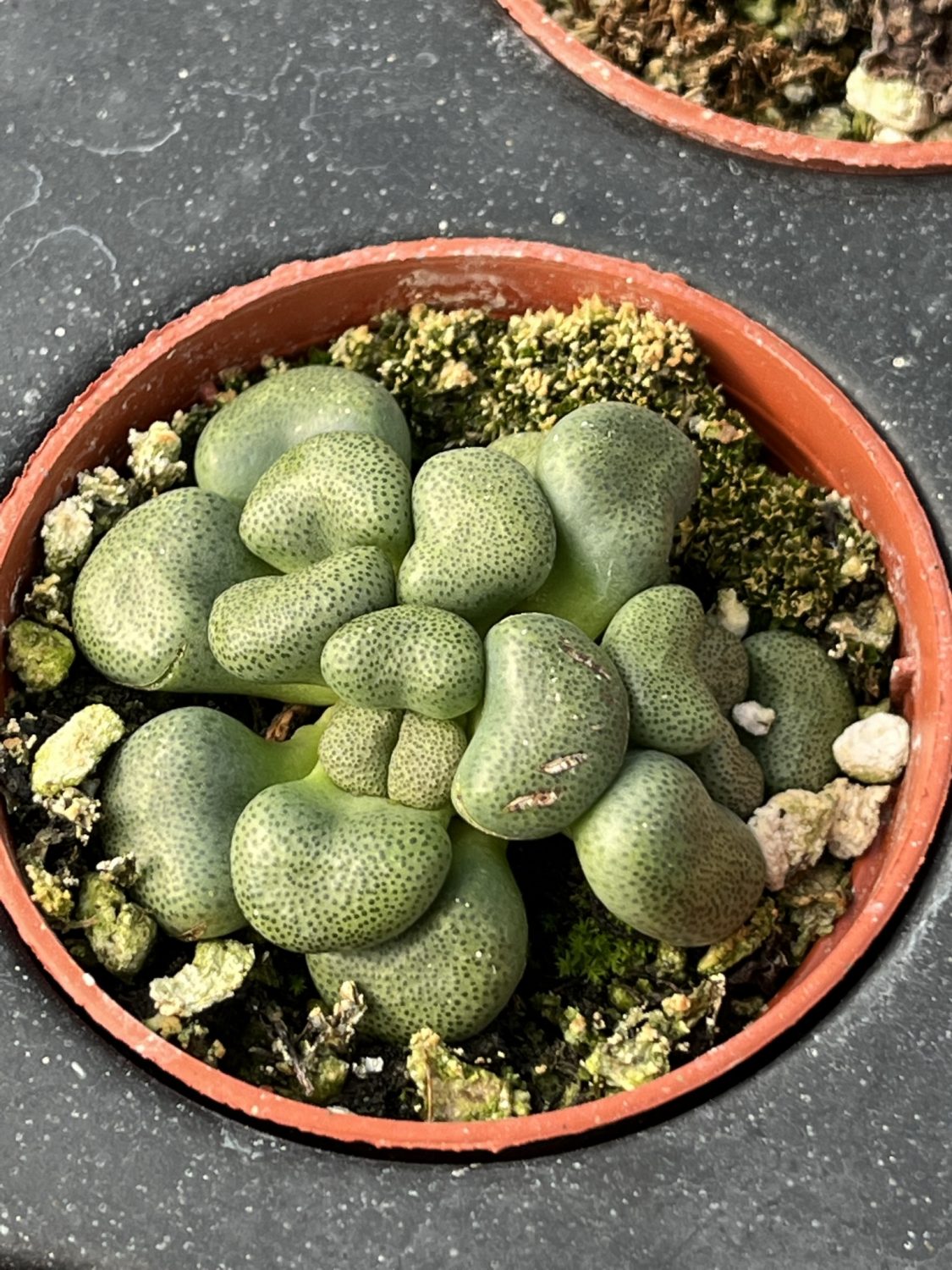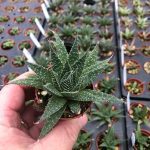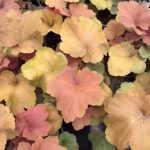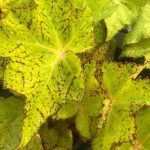Aloinopsis schooneesii, Living Stone
Price range: $4.99 through $12.99
Plant, Zone 9+
Discount per quantity
| Quantity | 3 - 8 | 9 - 14 | 15+ |
|---|---|---|---|
| Price | Price range: $4.84 through $12.60 | Price range: $4.69 through $12.21 | Price range: $4.49 through $11.69 |
| % Discount | 3% | 6% | 10% |
Description
Aloinopsis schooneesii, the Living Stone: A Warm Guide to a Tough Little Gem
Welcome to the Living Stone Family
We gather here to explore Aloinopsis schooneesii, the plant we love to call the Living Stone. You and I share a simple wish. We want to grow a tiny wonder that looks like a pebble yet feels alive under the sun. In other words, we want beauty, surprise, and ease, all in one pot. Let us walk this path together, step by step, and enjoy the fun along the way.
What Makes Aloinopsis schooneesii Special
Instead of tall stems and flashy flowers, this plant offers quiet charm. Thick, wedge-shaped leaves sit low and tight, forming clumps that look like speckled stones. After more than one glance, you see that each leaf ends in a small tip, almost like a cat’s tongue. In late winter, daisy-like blooms burst open, butter-yellow and cheerful. The contrast is striking. A rocky cushion suddenly glows with color.
But most of all, the Living Stone teaches us patience. It grows slowly, taking its time. It asks for little yet gives us much joy. That is why collectors prize it and beginners find it forgiving.
Getting to Know Its Natural Home
Aloinopsis schooneesii comes from arid plains in South Africa’s Eastern Cape. Days there are sunny. Nights cool down fast. Rain is light and rare, often falling in short winter bursts. The sandy soil drains in a flash. Roots cling to crevices where just a pinch of moisture hides. In other words, drought is normal, and survival is an art.
When we copy these rough conditions at home, the plant nods with ease. If we forget and treat it like a tropical beauty, trouble soon follows. Keep its homeland in mind, and you will succeed.
Shape, Color, and Seasonal Changes
Leaf Texture and Form
Each leaf is triangular, with a broad base and a pointed top. The skin feels rough, sprinkled with tiny white dots. This texture scatters light, making the plant shimmer in the early sun. New leaves appear from the center, pushing older ones outward in tight spirals. Over time, clumps widen, and gaps fill.
Color Shifts
During cool, dry months, leaves turn deep olive with rusty edges. After gentle watering, the green softens, and speckles shine. Too much shade darkens the plant; too much water swells it, and cracks may form. Watch these clues. They tell us what the Living Stone likes.
Flower Show
From late winter to early spring, thin stems lift golden flowers just above the leaf tips. Each bloom opens in the afternoon when the sun is kind. By dusk it closes. This daily rhythm often lasts a week or more. Allow the plant to rest dry in fall. Buds will form deep inside, ready to rise when days grow longer.
How to Care for Your Living Stone
We care by copying nature, yet we add a gentle touch. Let us break care into simple pieces.
Light: Sun That Feels Like Home
Six to eight hours of bright light each day keeps leaves compact and colors sharp. A south- or west-facing window suits indoor growers. If you see stretching or pale spots, move the plant closer to the glass or add a grow light. But most of all, watch for scorching rays in mid-summer. A sheer curtain tames harsh noon sun without stealing brightness.
Soil: A Bed That Drains Fast
Use a gritty mix that drops water like a sieve. Start with equal parts cactus soil and coarse pumice. Add extra fine gravel if you live in a humid place. Avoid peat moss; it holds water too long. Aim for a pH near neutral. Roots of A. schooneesii prefer sweet soil rather than acidic.
Water: Sip, Rest, Sip Again
Think of watering as a brief desert rain. Soak the mix, then wait. Let the soil dry to the bottom before the next drink. In summer heat, that pause may last two weeks. In winter rest, it may stretch to a full month. Instead of a set schedule, test with a wooden skewer. If the stick comes out clean and cool, wait a day longer. Your plant will thank you.
Temperature and Air: Warm Days, Cool Nights
Ideal daytime range sits between 70 °F and 85 °F (21 – 29 °C). Nights may fall to 50 °F (10 °C). Short dips to 40 °F (4 °C) are safe if leaves stay dry. Avoid frost. Indoors, give fresh air flow. Stale, humid rooms invite rot.
Feeding: A Light Snack, Not a Feast
During spring growth, feed once with a half-strength, low-nitrogen cactus fertilizer. Skip high nitrogen mixes. They force lush growth that splits leaves. After more than one feeding a year, salts build up and roots suffer. Rinse the pot with plain water every few months to keep minerals low.
Potting and Repotting: Room to Breathe
Choose a shallow clay pot with a large drain hole. Clay walls breathe, pulling extra moisture away. Repot every three years, or when clumps crowd the rim. Spring is best. Gently shake off old soil, trim dead roots, and slide the plant into fresh mix. Water lightly a week later, once root tips heal.
Propagation: New Plants from Old Friends
You have two paths—division and seed.
- Division
Lift a mature clump in spring. Look for natural breaks between heads. Use a clean blade to slice the joint, keeping roots on each piece. Dust cuts with dry sulfur to ward off rot. Plant divisions in dry mix, wait seven days, then water lightly. - Seed
After flowers fade, seed pods form. Harvest when pods turn brown and split. Sow seeds on the surface of sterile sand. Mist gently. Cover with a clear lid and place in bright, indirect light at 70 °F (21 °C). Tiny leaves appear in two weeks. Remove the lid once sprouts stand firm.
Common Pests and Problems: Stay Alert, Stay Calm
- Mealybugs hide in leaf joints. Dab with alcohol on a cotton swab. Repeat in a week.
- Root Rot arises from wet soil. Cut away black roots, dust with fungicide, and replant in fresh, dry mix.
- Spider Mites spin fine webs under leaves. Rinse with a strong water blast and raise humidity for a day.
- Sunburn shows as white scars. Slide the pot to softer light and leave scars alone; they fade slowly.
Instead of panic, act early. A weekly visual check stops issues before they spread.
Year-Round Care: Life Cycle Through the Seasons
- Spring: Growth starts. Resume watering and give one gentle feed.
- Summer: Water when dry, shade from fierce noon beams, and enjoy steady growth.
- Fall: Days shorten. Ease up on water. Let soil dry longer. Buds form unseen.
- Winter: Keep cool and mostly dry. Flowers rise. After blooming, rest continues until warmth returns.
By following this cycle, we dance in tune with the plant’s inner clock.
Creative Displays: Let It Shine
Place your Living Stone in a low dish filled with mixed pebbles. The stones hide soil and echo the plant’s shape. Instead of single pots, create miniature desert scenes with fellow winter growers like Lithops and Titanopsis. After more than a short while, friends will marvel at how stones seem to bloom.
You can also set the pot on a wooden tray flanked by driftwood. The rough wood and smooth leaves play off each other. Add a small tag with the plant’s name. Education meets art.
Growing Together: Why This Plant Connects Us
Aloinopsis schooneesii reminds us that strength can look small. It shows how life hides in harsh places yet thrives with care. When we share pups with a neighbor or seeds with a child, we pass on hope. In other words, a Living Stone builds living ties.
We learn to watch the sky, feel the soil, and wait for signs. Patience grows in us as roots grow in the pot. Each new bud is a gentle victory. We celebrate together.
Bright Horizons for Little Stones
With light, grit, and a mindful hand, your Living Stone will greet each season with calm beauty. We have explored its story, its needs, and its gifts. Now the next chapter sits in your care. May every tiny leaf inspire big smiles, and may every bloom shine on the horizon you and I share.
Additional information
| Weight | N/A |
|---|---|
| Options | 2 in. (3 fl.oz.) Pot, 4 in. (16.9 fl. oz.) Pot |





